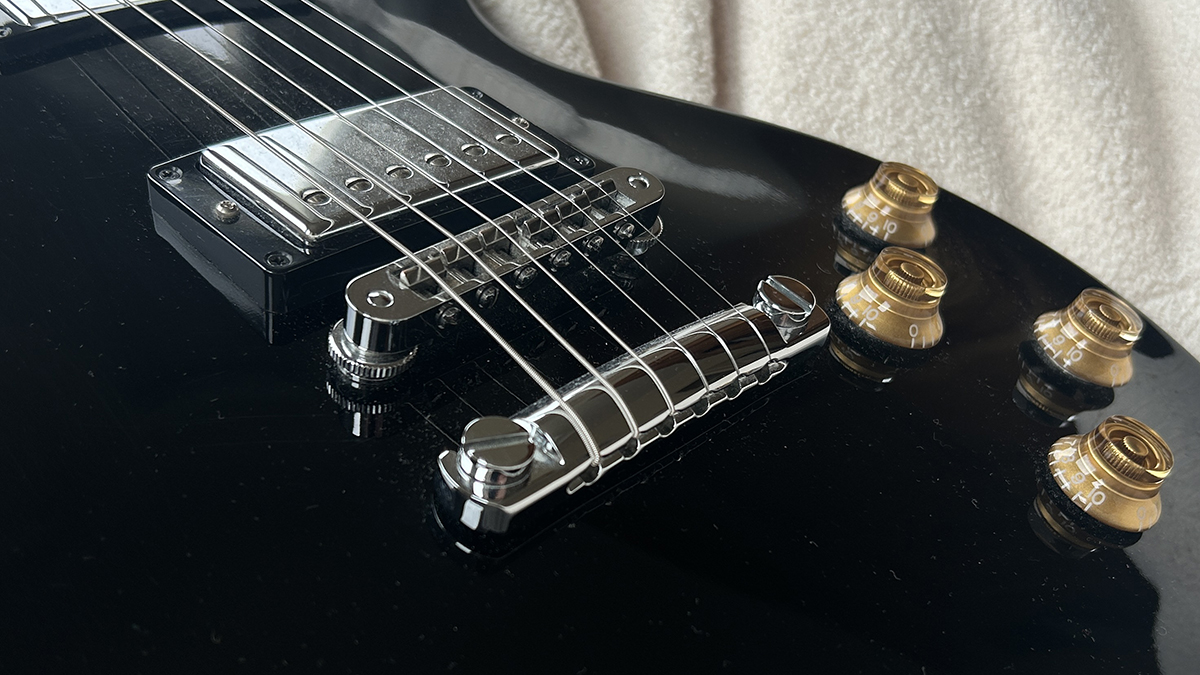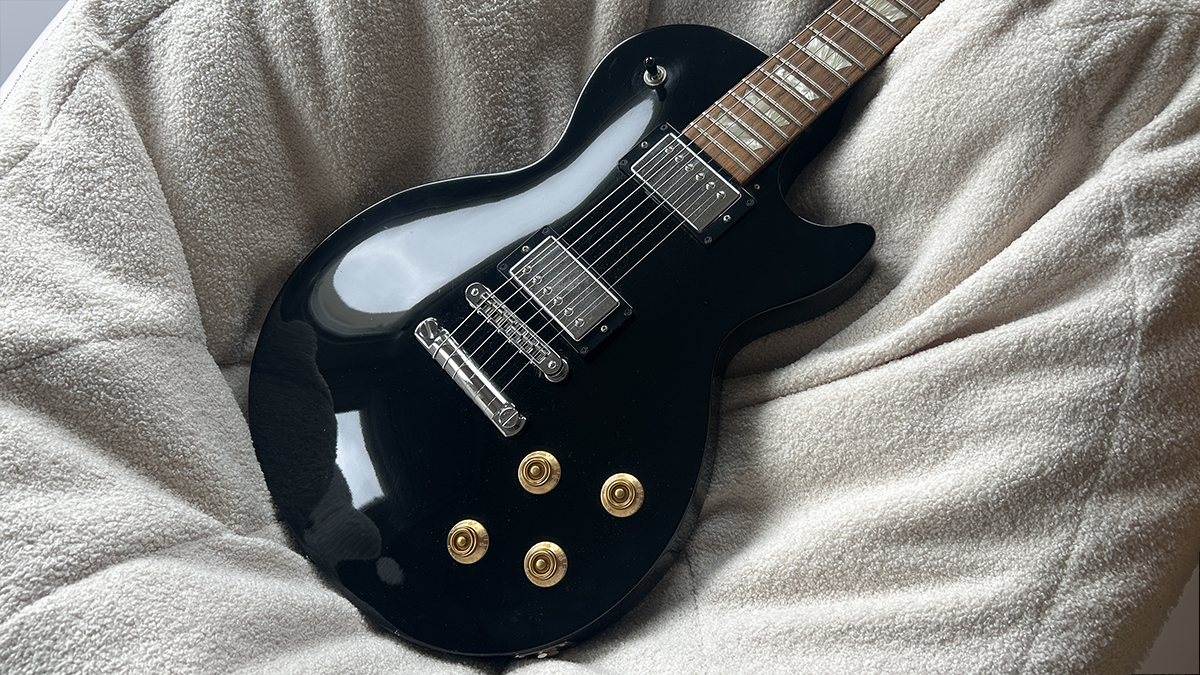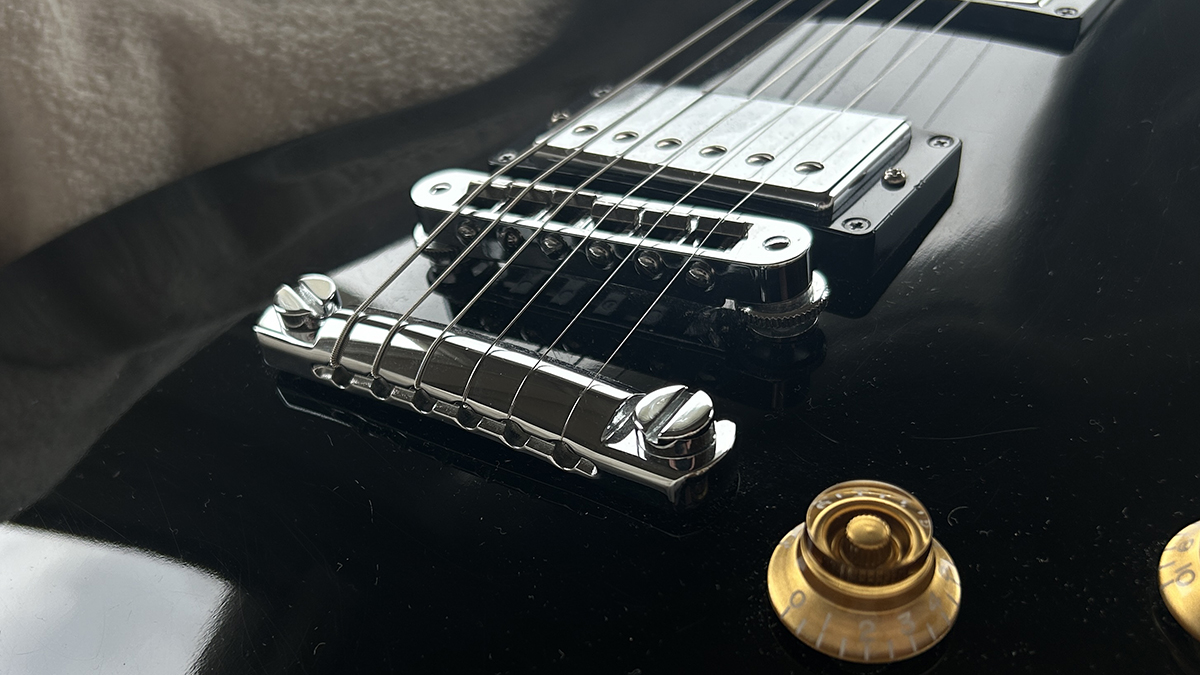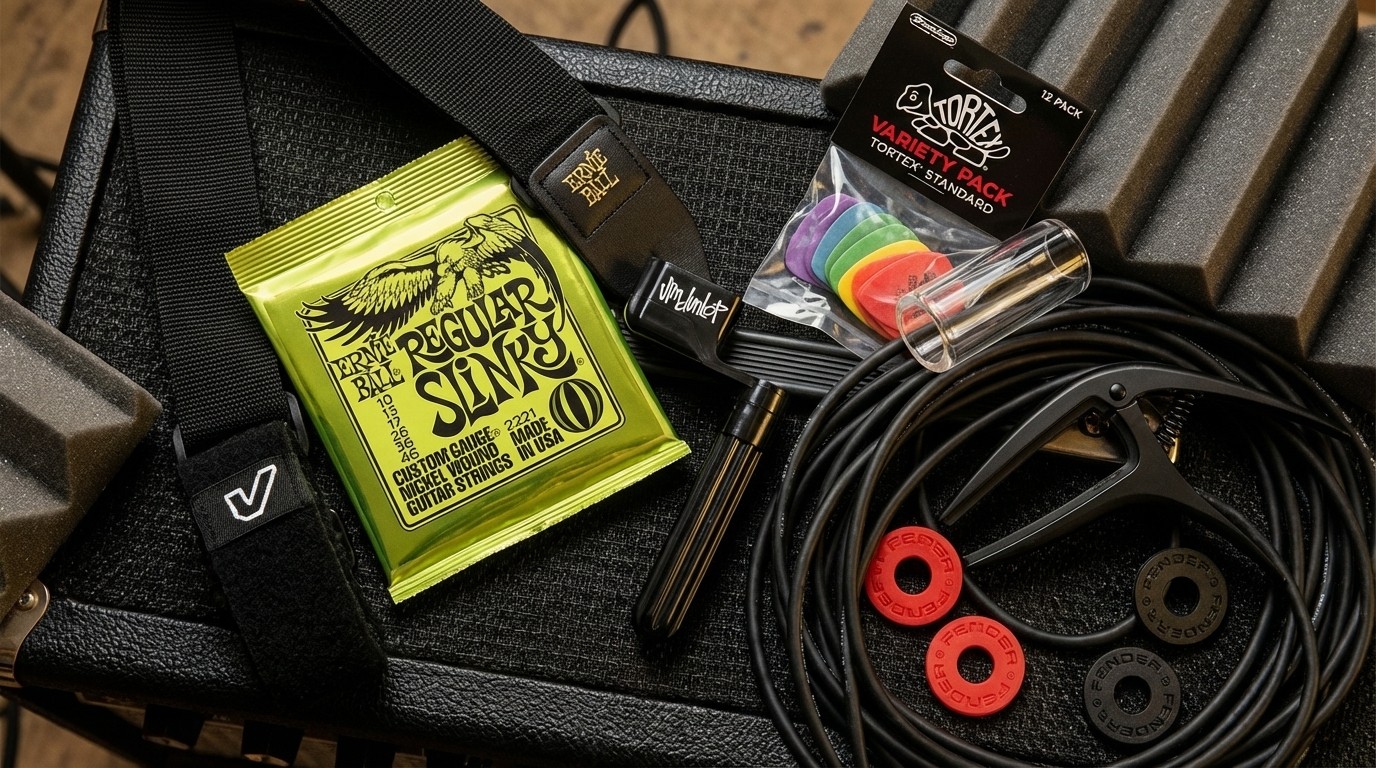“It breathed new life into a guitar I hadn’t played in years”: I top-wrapped my Les Paul to find out whether it actually made a difference – and I wish I’d done it sooner

My first “proper” electric guitar – after my Squier Stratocaster starter set – was a Gibson Les Paul Studio. As a youngster reared on a diet of Guns N’ Roses and classic rock groups, the entry-level LP was a dream guitar for me.
It remained my number one guitar until, a few years later, my tastes took a decidedly blues-y turn (largely thanks to John Mayer) and I defected away from the Gibson ranks. As a result, my once-beloved Les Paul Studio has remained largely unplayed for a number of years.
Fast-forward to 2024, and I’d be lying if I said my trip to the Gibson Garage in London didn’t inspire me to reconnect with my ol’ Les Paul Studio, but it was in need of some TLC.
A deep clean and a setup were in order – and when it came to restringing, I thought I’d take the opportunity to try something different: top-wrapping.
The practice of top-wrapping is increasingly well known. It involves... well, wrapping the electric guitar strings over the top of a stopbar tailpiece (or purpose-built bridge), rather than through it, while restringing.
This significantly reduces the angle at which the strings pass over the bridge and increases the physical contact between tailpiece and string, creating a flatter string thread and thus theoretically improving string flexibility, slinkiness and sustain.

Compatible with any Stopbar-loaded guitar – think SG, Les Paul and ES-335 – It’s a very easy and (sort of) reversible mod championed by the likes of Joe Bonamassa, Jimmy Page and Billy Gibbons… and the subject of intense debate online.
All the latest guitar news, interviews, lessons, reviews, deals and more, direct to your inbox!
While some top-wrapping fans are convinced it improves tone and playability, others argue the differences are too small to notice, and any perceived changes in the behavior of a top-wrapped guitar are all psychosomatic.
In bringing my Les Paul back out of hibernation, I thought it’d try the top-wrap test to see if it actually made a difference. The best affordable tone upgrade ever, or just a myth?
On paper, top-wrapping should make guitar strings feel “slinkier” – ie, more pliable to play – because of the reduced break angle between the bridge and tailpiece, the latter of which is “decked” and dropped snug to the body. Not only that, the increased contact between string and tailpiece – as well as the closer proximity between body and tailpiece – should increase resonance and sustain.
As such, the first thing I was looking out for was playability. Bonamassa has been previously vocal about the benefits of top-wrapping, once arguing, “In order to make the guitar feel a little bit slinkier and not so difficult to play… you top-wrap over the stud, which lessens the angle over the bridge.”
This, he said, results in “a much nicer, slinkier feel, but it also retains the big heaviness of the string, so when you hit hard you’re not playing out of tune”.
Chris Buck has been equally positive about the practice. “In the last two years I've been top-wrapping some of my Les Paul-style guitars," he said in a YouTube video, “for me at least – whether it's psychosomatic or not, who knows, strings do feel a little bit more pliable. As though there is a little bit less tension in the strings.”
I quickly found the Les Paul Studio to behave and feel quite differently to when it was traditionally strung
Their words seem to hold true. As is the case with most facets of guitar playing, this stringing method is going to come down to personal preference, but after top-wrapping my own instrument I quickly found the Les Paul Studio to behave and feel quite differently to when it was traditionally strung.
Under the fretting hand, vibratos seemingly became more intuitive, and whole-note-and-then-some bends felt surprisingly comfortable. Indeed, I found myself feeling more expressive – perhaps overly so – with my lead playing thanks in part to the freedom I felt on the strings.
Now, top-wrapping isn’t a quick fix to achieving a certain style – nor is it even a confirmed science – but I’d be lying if I said I didn’t feel more connected to my guitar. Is it all in my head? Possibly. But everything just felt a bit… easier. Excessive string-bending isn't a huge part of my technique, but I found myself indulgently dipping more into that territory because of the simple switch.

Of course, the second big top-wrapping talking point is tone. Does the increased contact result in a more resonant and sustaining sound? Now, I’m not the most scientifically astute guitarist, so rather than measuring sound waves or what have you, I again went off feeling.
And what I felt was promising. Unplugged, the LP sounded a bit brighter. Sure, the new strings probably helped, but remember this was my main guitar for a good few years, so I’m familiar with what a standard string setup sounds like.
That boldness and brightness (which I’m ascribing to the dropped bridge and top-wrapped strings) was matched when plugged in. Big, open chord voicings, again, felt... bigger, and had a satisfying oomph to them when the strings were really made to work.
There are a few downsides to top-wrapping, and it’s worth noting that stringing your prized instrument in such a way can scuff up your Stopbar. If you hope to flip-flop between the stringing methods, unless you plan on buying a backup ‘bar, you might be left with some nasty playing scars.
This can be mitigated by using the Lightning Bar – a relatively recent innovation which promises to give the top-wrapping benefits while leaving the tailpiece itself unscathed by way of a neat through-bridge design.
And a discussion of top-wrapping wouldn’t be complete without mention of the measured experiment conducted by YouTuber Dylan Talks Tone. Somewhat counter to all anecdotal evidence, he found top-wrapping actually increases tension for string bends, rather than reduces it.
Sometimes, these small tweaks can be the key to connecting with a new instrument, or reconnecting with one you haven’t played for a while
Gibson players have postulated over the difference between string tension and elasticity… but that’s where the rabbit hole starts, and this writer taps out. It feels good, so that’s all that really matters.
So, is it all psychosomatic? Possibly, and we’re no closer to finding out the truth. Heck, even the Gibson Gazette refused to fall on one side or the other.
But one thing about top-wrapping is for certain: it breathed new life into a guitar I hadn’t played for years, and I wish I’d done it sooner. Sometimes, these small tweaks can be the key to connecting with a new instrument, or reconnecting with one you haven’t played for a while.
Now, my Les Paul sits out on its stand, rather than in its case, and is my current grab-and-go guitar for at-home noodling.
Should you give it a go? Well, I’d say, why not – it’s the only way you’ll find out if top-wrapping is for you. It’s definitely for me: I don’t see myself reverting back to the traditional stringing method any time soon. I also know what I'll be doing next time I restring my ES-335…

Matt is the GuitarWorld.com News Editor, and has been writing and editing for the site for five years. He has a Masters in the guitar, a degree in history, and has spent the last 19 years playing everything from blues and jazz to indie and pop. During his GW career, he’s interviewed Peter Frampton, Zakk Wylde, Tosin Abasi, Matteo Mancuso and more, and has profiled the CEOs of Guitar Center and Fender.
When he’s not combining his passion for writing and music during his day job, Matt performs with indie rock duo Esme Emerson, and has previously opened for the likes of Ed Sheeran, Keane, Japanese House and Good Neighbours.
